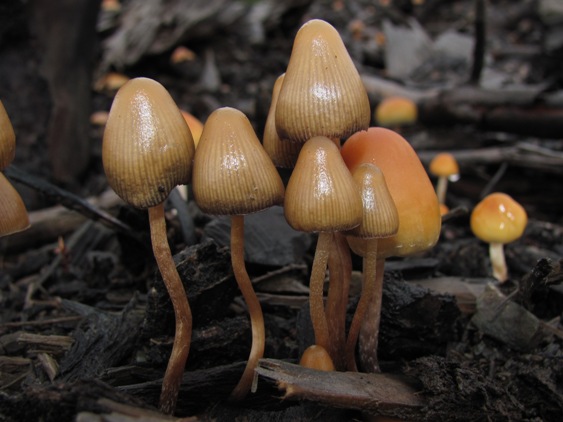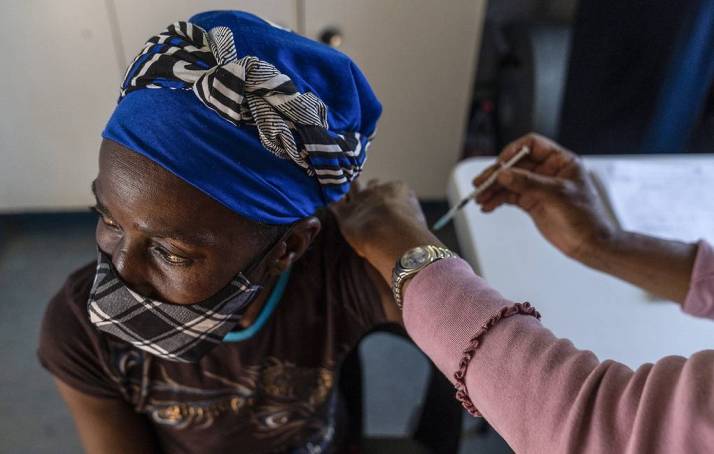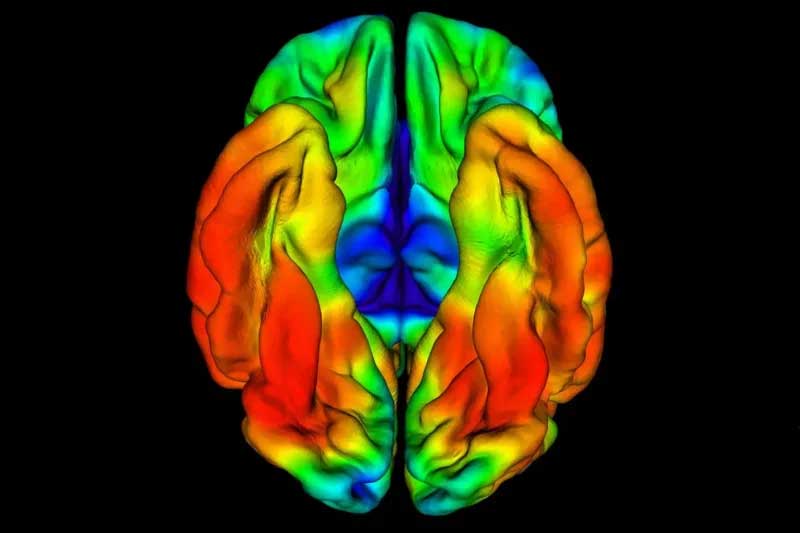The study provides a detailed look at how drugs containing psilocybin temporarily enhance the brain’s ability to adapt and change, a capacity known as plasticity. According to Dr. Joshua Siegel, a researcher at the University of Washington and the study’s lead author, disruptions in brain networks are responsible for the plastic effects of psychedelics.
A study has found that psilocybin can desynchronize networks in the brain, potentially increasing its plasticity. In the name of science, Dr. Nico Dosenbach has had his brain scanned dozens of times. But this was the first time he took a mind-altering drug before stepping into an MRI tunnel.
“It was like I was falling deeper and deeper into weirdness,” he recalls. “I didn’t even know where I was. Time stood still, and I was everyone.”
Dosenbach, an assistant professor of neurology at Washington University School of Medicine in St. Louis, was given a high dose of psilocybin, the active ingredient in magic mushrooms, by his colleagues as part of a seven-person study designed to demonstrate how psilocybin produces mind-altering effects.
The findings, published in the journal Nature in July 2024, suggest that psychedelic drugs work by disrupting certain brain networks, particularly one that helps people form a sense of space, time and self.
“For the first time, we understand in really fine detail which networks are changing, how much they are changing, and what is retained after the experience,” says Dr. Petros Petridis of the NYU Langone Center for Psychedelic Medicine, who wrote an editorial accompanying the study.
The study also provided a detailed look at how these drugs temporarily enhance the brain’s ability to adapt and change, a capacity known as plasticity. According to Dr. Joshua Siegel, a researcher at the University of Washington and the study’s lead author, disruptions in brain networks “appear to be the cause of the plastic effects of psychedelics.”

If true, he said, it could explain why psychedelics help people suffering from addiction or depression.
Dosenbach and the other participants were randomly given either a stimulant or 25 milligrams of psilocybin, a dose high enough to induce hallucinations. “It was definitely a fascinating experience for a neuroscientist,” he says. “It’s really interesting how your brain can fall apart—because the way something breaks tells you something about how it works.”
Dosenbach’s journey has taken him to places only a neuroscientist would likely go.
“I was inside the brain, I was controlling the brain waves, and I was Mark Raichle,” he says, referring to Dr. Markus Raichle, a colleague and co-author of the study who is also a prominent figure in the world of neuroscience.
In the study, participants’ brains were scanned an average of 18 times over a three-week period. Four repeated the experiment after six to 12 months.
“You recruit individual people many times,” Siegel says, “and that allows you to get a very detailed and precise map of their brain networks.”
The scans showed that psilocybin caused rapid and dramatic changes in specific brain networks. Typically, neurons in a given network become active at the same time — often in tandem with other networks.
“Under the influence of psilocybin, populations of neurons that are normally in sync become out of sync,” Siegel says.
The brain “falls apart.” And it seems to respond by entering a state of heightened plasticity that can last for weeks. “Desynchronization is probably the most important key to understanding where the plasticity effects of psychedelics come from,” says Siegel.
The greatest loss of synchrony was seen in a group of brain neurons called the default mode network, which is active when the brain is daydreaming or otherwise not focused on the outside world. That network was discovered by scientists including Raichle, the man who became Dosenbach’s alter ego in the scanner.
The default mode network is critical for self-referential memory, which helps the brain keep track of information like, “Who am I?” and “What did I do?” Siegel says.
The study hints at how psychedelic drugs could be included in the treatment of people suffering from drug addiction, depression or post-traumatic stress.
“It seems like there’s a big shift happening that therapists could use,” Petridis says. An addicted patient, for example, might rethink their relationship with substances in the days and weeks after taking a dose of psilocybin, he says.
But the approach comes with risks, said Dr. Ginger Nichol, a psychiatrist at the University of Washington whose husband took part in the study and took psilocybin twice.
“The first time, he had an almost religious experience,” she says. “The second time, he saw demons.” Still, Nichol says, psychedelics may be a way to help mental health patients understand their capacity for change. “It takes years to understand that in therapy,” she says. “It gives us a different way to think about learning and recovery.”
Psychedelic drugs could usher in a new era of psychiatric treatment, neuroscientists say. One of the most popular talks at the 2022 Society of Neuroscience meeting in San Diego was a session on psychedelic drugs.
About 1,000 brain scientists packed into a ballroom at the San Diego Convention Center for a symposium called “Psychedelics and Neural Plasticity.” They came to hear talks about how drugs like psilocybin and MDMA can alter individual brain cells, can help rewire the brain, and may offer new treatments for disorders ranging from depression to chronic pain.
“I was pleasantly surprised by the number of people,” says Alex Kwan, a biomedical engineer at Cornell University who spoke at the session. “There’s been a lot of excitement around psychedelics in the last couple of years,” Kwan says. “Scientists are now realizing that we just don’t know that much about what these compounds do.”
So during the session, Kwan and several other researchers shared what they had learned about the drugs.
Kwan described his own work on how psilocybin, the active ingredient in magic mushrooms, appears to help the brain rewire itself by creating new connections between neurons. A study in mice found that psilocybin altered dendrites, the branched structures that extend from a nerve cell and receive input from other cells.
Dendrites form connections through small projections known as dendritic spines. And in mice given psilocybin, the size and number of these spines increased by about 10%, allowing the cells to form new connections.
“When we give mice a single dose of psilocybin, we can see these new connections forming within a day,” Kwan says. “And then they can persist for more than a month,” the equivalent of many months in humans.
New connections are a critical part of a rewiring process known as brain plasticity, which allows the brain to learn and adapt.

“Psychedelics seem to enhance plasticity,” Kwan says.
Brain plasticity may explain why a single dose of a psychedelic drug can have long-term effects on disorders such as anxiety, depression and post-traumatic stress disorder.
“It can take months or years,” said Dr. Gitte Knudsen, a neurologist at the University of Copenhagen in Denmark who spoke at the psychedelic session. “It’s a mind-boggling effect.”
These long-term effects have been demonstrated with drugs like psilocybin, LSD and DMT (ayahuasca), Knudsen says. In contrast, most existing psychiatric drugs must be taken every day.
But psychedelic drugs have their downsides, too. They can cause nausea or hallucinations that are frightening or unpleasant.
“It can be a pretty overwhelming experience for people,” Knudsen says. “And for that reason, you need to prepare them for it, and you also need to be with them while they’re going through it.”
Even if patients are well prepared for a session, they may still have mixed feelings afterward, Knudsen says.
“When people have had a psychedelic experience in my lab, they say, ‘Wow, that was amazing, that was just a fantastic experience,’” she says. “And you ask them, ‘Do you want to come back next week for another session?’ They say, ‘Thank you, but no thank you.’”
The fact that psychedelics were presented at the world’s largest meeting of brain scientists suggests that these drugs are poised to enter the scientific mainstream. This is a recent development.
Psychedelic research was popular in the 1950s but largely died out after the mid-1960s, when the drugs became illegal in the United States and Europe. In the 1990s, a few researchers began cautiously exploring how drugs like LSD, MDMA, and psilocybin might help with psychiatric conditions like depression and post-traumatic stress disorder.
And in 2016, two studies published by prominent researchers “really got everyone excited,” says Dr. Joshua Gordon, who directs the National Institute of Mental Health. Both studies found that a single treatment with psilocybin reduced anxiety and depression in cancer patients.
This has led to a number of major studies of psychedelics, including a study published in November 2021 in The New England Journal of Medicine that found psilocybin helped people with severe depression who had not responded to other treatments.
Such studies suggest that psychedelics “will be useful and effective” in treating mental disorders, Gordon says.
But the effects found in the large psychedelic studies were far less dramatic than those found in some earlier, smaller studies, Gordon says. He also says that some companies hoping to market psychedelics have exaggerated their benefits.






